The Science of Ice Cream
 Oct 10, 2012 Tweet
Oct 10, 2012 Tweet
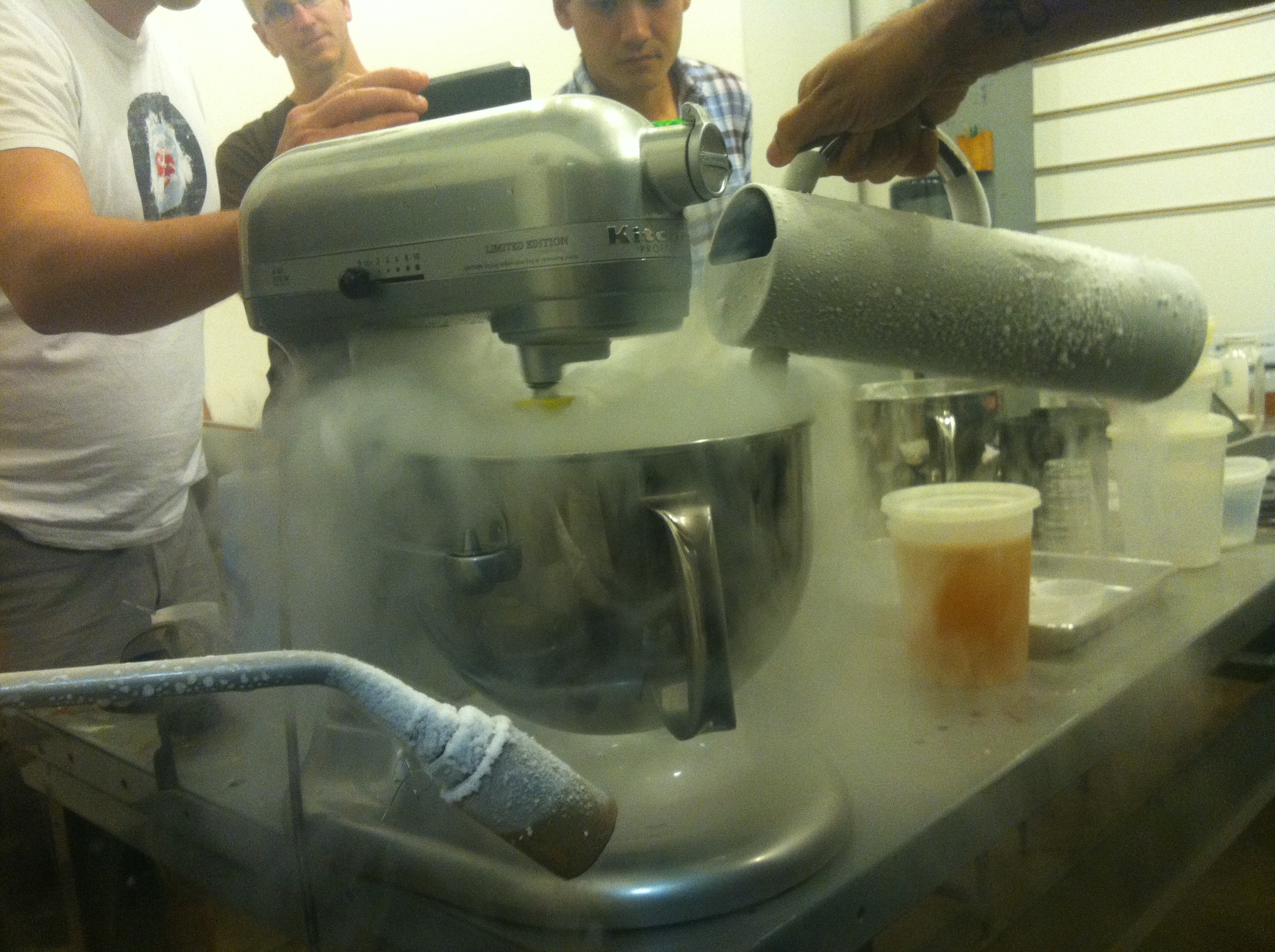 liquid nitrogen is far cooler (literally) than freezing water. This makes for ice cream that's creamy because of the intense coldness of the liquid nitrogen
liquid nitrogen is far cooler (literally) than freezing water. This makes for ice cream that's creamy because of the intense coldness of the liquid nitrogen
What is ice cream? The question seems ridiculous; it's creamy and good, period. But there's the science behind it, that the acolytes of Molecular Gastronomy are more than well versed in than you or I. We had chef and molecular gastronomist Mihir Desai come by 3rd Ward and teach us about The Science of Ice Cream and Sonication, or cooking with sound.
Mihir Desai is the chef of the xSpecies Adventure Club, a roving supper club which explores themes of biodiversity, sustainability and urban agriculture through molecular cuisine. He consults internationally with restaurants keen to expand their experimental kitchens. Presently, Mihir is also a doctoral candidate in political philosophy at the Kennedy School of Government at Harvard University.
I didn't know much about what to expect, as I'm not a self-proclaimed foodie or chemist, nor the type to get lost in a pint of ice cream.
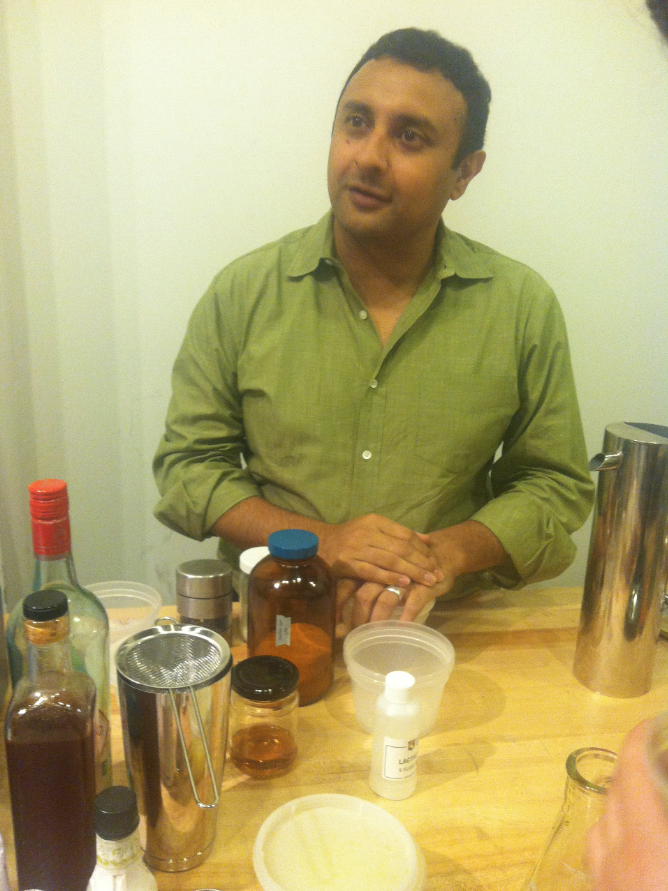 Mihir Desai, chef, gastronomy adventurer, and PhD student.
Mihir Desai, chef, gastronomy adventurer, and PhD student.
Once Mihir gave us a comprehensive overview of gastronomy, in simple terms via Peter Barham, "the application of scientific princiles to the understanding and improvement of domestic and gastronomic food preparation." Or, more in my lingo, a la the beloved Harold McGee, author of On Food and Cooking: The Science and Lore of the Kitchen, says it's the "scientific study of deliciousness." This methodology and its techniques encompass natural history, physics, chemistry, cookery, business, and political economy.
Something as simple as ice cream is made by freezing milkfat and sugar while stirring. The different methods we employed throughout the class, gave rise to a variety of consistencies--creamy vs. grainy, fluffy vs. icy, slow melting vs. fast melting.
Variables made for interesting differences. If you use olive oil, your ice cream's more likely to melt quicker, as olive oil has a lower fat content than milkfat. Ice cream has a minimum of 10% fat while gelato traditionally has about 6% fat. Gelato has less air whipped into it than ice cream, which can result in a denser dessert. Haagen Dazs has zero air in production, which is why it's so expensive.
Sorbets are dairy free, made from fruit juice or flavored water. We made some bluberry sorbet with cardomum and basil--which lingered in my mouth like an indian chutney. Granitas are pretty much the same as sorbets except they're hand churned. As the name suggests, it's much more grainy.
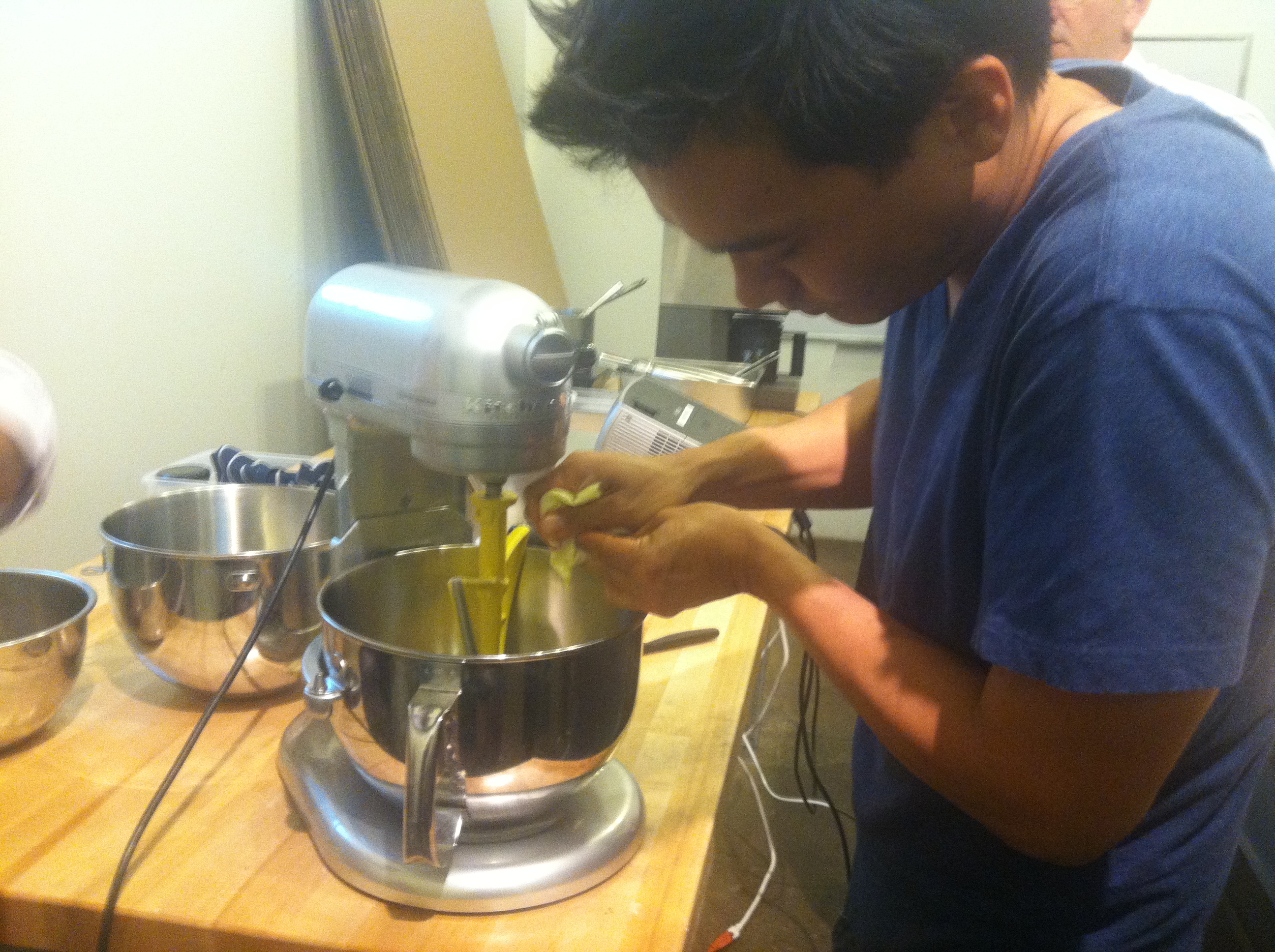 innovations in ice cream flavors: white tea/white chocolate; chocolate/whiskey; chocolate/Guinness
innovations in ice cream flavors: white tea/white chocolate; chocolate/whiskey; chocolate/Guinness
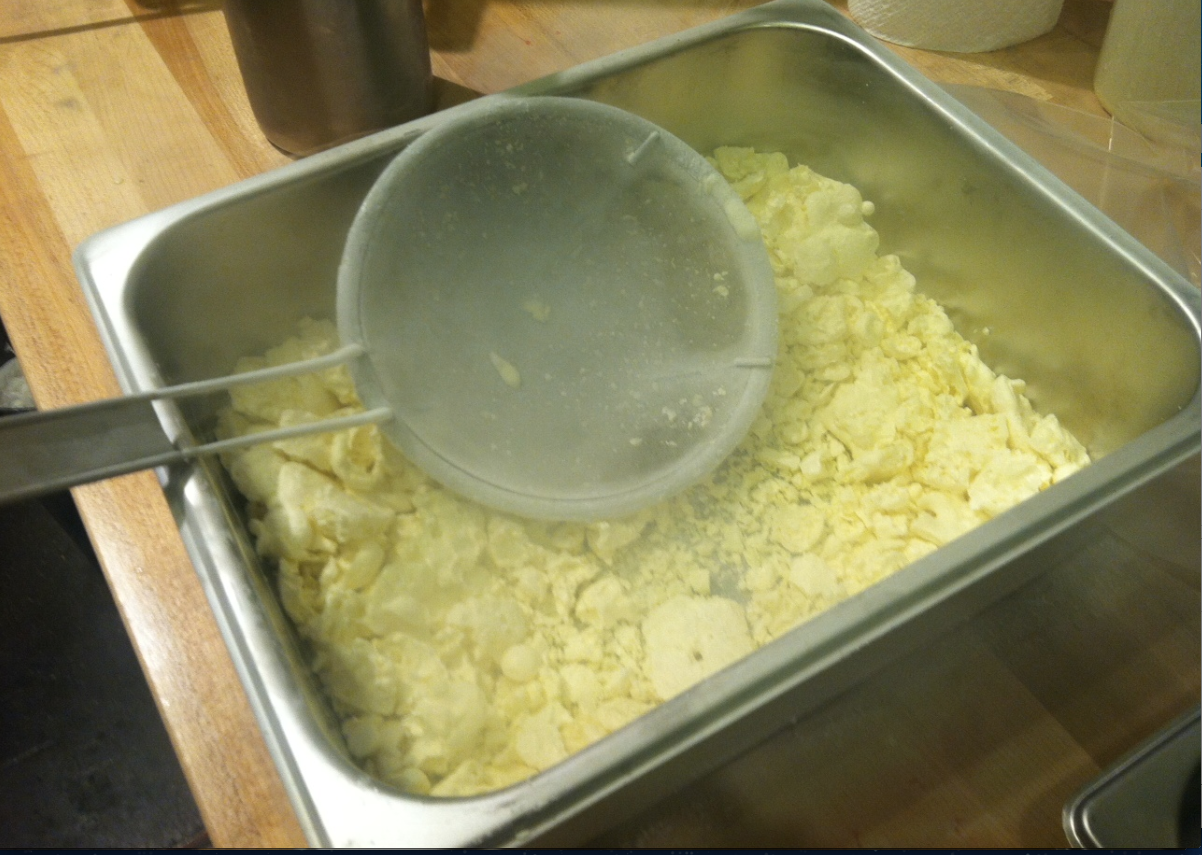 "popcorn" --liquid mix quickly cooled with liquid nitrogen. burned my tongue with how cold it was!
"popcorn" --liquid mix quickly cooled with liquid nitrogen. burned my tongue with how cold it was!
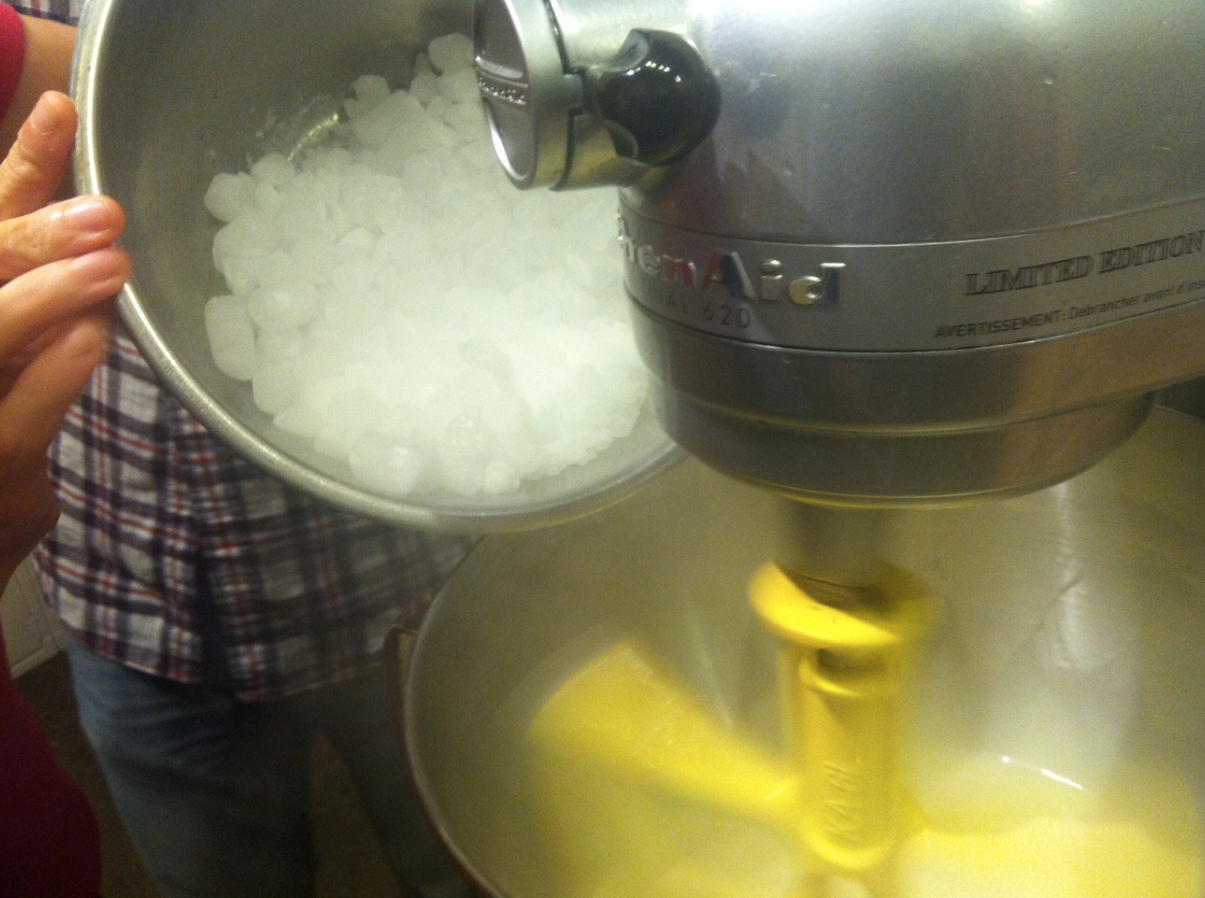 ice cream churned with ice; less creamy that ice cream made with liquid nitrogen, as it's not as cold. More grit, which I like.
ice cream churned with ice; less creamy that ice cream made with liquid nitrogen, as it's not as cold. More grit, which I like.
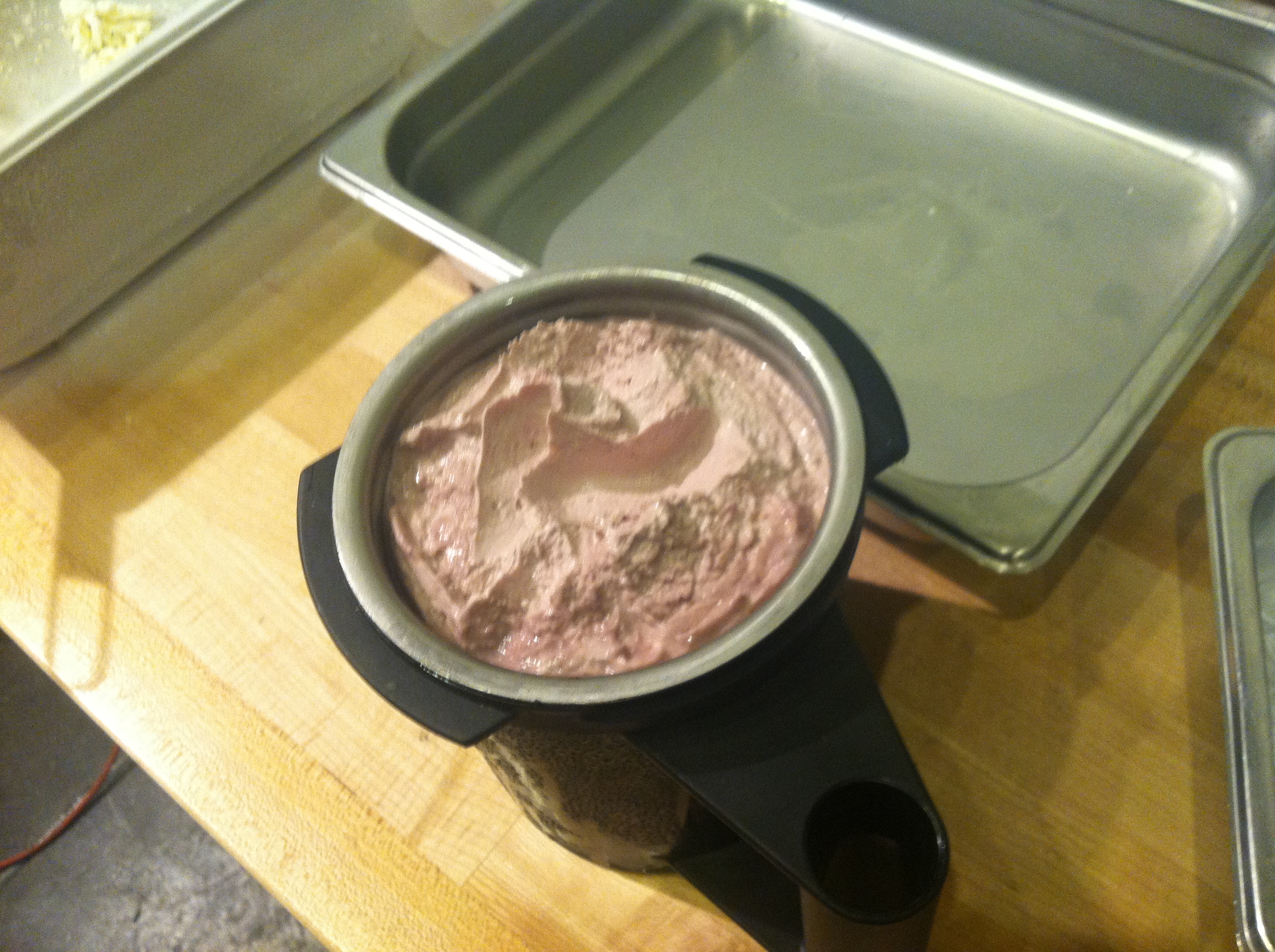 chocolate Guinness goodness, courtesy of the a liquid nitrogen churn
chocolate Guinness goodness, courtesy of the a liquid nitrogen churn
 Sorbet of blueberries, cardamom and basil is yum.
Sorbet of blueberries, cardamom and basil is yum.

